
Culinary Basics: The Proper Way to Clean Your Cookware
You've just created a tasty, aromatic dish, and you want to share it with your friends. But, before you do, there's one last thing you need to do: clean your cookware. When you cook with certain types of food, such as asparagus or cabbage, some of the strong odors tend to cling to your cookware. It can make it difficult to prepare a separate meal later.
Have you ever spent time clearing your cookware and wondered why it was cloudy in the first place? Unfortunately, this is one of those lessons that has to be learned through experience. This is because there are many reasons why cookware can get cloudy, and each one will require different solutions to resolve properly.But it doesn't need to be so complicated. This guide has been created to help you understand why your oven gets clouded and what you can do about it;
Tips for General Cleaning of Cookware
The manufacturer's care instructions are an invaluable resource for all cookware.
Wash all pots and pans inside and out as soon as possible after use to reduce the risk of contamination. To clean baked-on food from a pan, fill the pan with soapsuds, and let it sit overnight. In the morning, scrub off the residue with a brush over a warm burner and rub vegetable oil into the pan with a paper towel. Prevent heat stains on the outside of pans by keeping gas flames low so that they cannot lick up the pot's side. To minimize the risk of breaking cookware, allow it to cool before washing or soaking.To minimize the risk of breaking cookware, allow it to cool before washing or soaking. Aluminum pots and pans can also become discolored.. Let's find out more about aluminum's propensity for discoloration and how to clean it when it happens.
Cleaning Aluminum Cookware
Cleaning aluminum is easy, and it's something you can do at home without the help of a professional. All you need is a little bit of elbow grease and some everyday household products.
Here are some great tips for cleaning aluminum, including avoiding discoloration.
To prevent aluminum cookware from discoloring, never wash it in a dishwasher or soak it for long periods in soapy water. To remove internal discoloration, fill the pan with water, add one tablespoon cream of tartar or one tablespoon lemon juice per quart of water, and simmer until the discoloration is gone. Scour the pan with a steel-wool soap pad to remove remaining bits of burnt food.
Caution: Wear rubber gloves.
To clean cast-aluminum cookware, buff with a steel-wool soap pad.
A liquid nonabrasive bathroom cleaner or a paste of baking soda and water used with a synthetic scouring pad will polish cast and sheet aluminum.
Cleaning Cast-Iron Cookware
Cast iron is a great choice for many types of cooking, but it can be difficult to clean. Here are some of our favorite tips for keeping your cast iron in pristine condition:
To remove burned-on food from a cast-iron skillet, fill the pan with water and bring it to a boil over high heat. Set the pan aside to cool until it’s cool enough to handle. Scrape off any debris with a plastic spatula or wooden spoon. Rinse well with hot water and dry thoroughly before storing.
To clean the outside of your cast iron pan, wipe it down with a damp paper towel or cloth, then rub it with oil to restore its natural luster. Be sure to wash your hands well after handling cast iron cookware—it may contain lead!
If you have a pot stained by rust or discolored by grease buildup, try filling it with equal parts vinegar and salt (or baking soda) and boiling it on the stovetop for several hours. Afterward, scrub away stubborn stains using baking soda paste or lemon juice paste (which also works well for cleaning stainless steel sinks).
Cleaning Copper Cookware
Copper is a beautiful, versatile metal that's been used for centuries. It's also one of the most common metals globally and is used to make coins, jewelry, and cookware.
Copper cookware has many benefits: it heats quickly and evenly, conducts heat well, so you don't burn your food, and is super durable. But like any metal, copper changes color with use and exposure to air. If you prefer shiny copper pots and pans, you can easily clean them with a commercial copper cleaner—follow the manufacturer's instructions!
Copper cookware is lined with other metals (usually tin or steel) to prevent harmful chemical reactions with food. Use only wood, nylon, or nonstick-coated spoons for stirring to avoid scratches on your pans. Also, remember these tips:
Some copper cookware comes with a protective lacquer coating that must get removed before the utensil is heated. Follow the manufacturer's instructions or place in a solution of 1 cup baking soda and boiling water. Let it stand until the water is cool—then peel off the coating; wash, rinse, and then let it dry.
To prevent copper pans from scorching, always ensure that the pan has fat or liquid in it before placing it over heat. If you melt butter in a pan, swirl it around to ensure it covers the bottom of the pan and up the sides. Lower the heat as soon as the pot contents reach the boiling point.
Cleaning Non-stick Cookware
Cleaning nonstick cookware is a lot easier than it sounds.
You all have your favorite pans that are irreplaceable. They might be the pans your grandmother gave you when she passed away or the brand-new ones you used to make the most amazing fried chicken. No matter what they are, they're precious to you.
So when it comes time to clean them? You want to make sure you do it right—but how? Here are the best tips for keeping your nonstick cookware in tip-top shape so that—for as long as possible—you can keep cooking with your favorite pans without having to worry about them getting scratched up or damaged.
First things first: don't use metal utensils on your nonstick cookware. Metal utensils will scratch up the surface of your pan and ruin its non-stick quality. Use wooden or silicone utensils instead.
Next: don't use soap on your nonstick pans! Soap will cause residue buildup on your pan over time and make it harder to clean off later on down the road when there's more gunk built on your cookware.
Finally: Rinse the dish thoroughly with hot water and dry completely before storing it away in your cabinet.
Cleaning Plastic and Rubber Cookware
Cleaning plastic and rubber cookware is a difficult task. They are very difficult to clean because they are made from different materials, making it harder for soap to get into the cracks of the pot. But what's the sole purpose of this article? To teach you how to clean your cookware and, in this case, your plastic and rubber cookware using different methods.
First, you need to soak the cookware in warm water for about 15 minutes. This will loosen up any food particles stuck on the pots or pans. After soaking, you can use a scrub brush to scrub away any remaining residue from the pot or pan. You may also want to use a sponge with soap if there is still some residue left over after soaking your pot in warm water alone.
After scrubbing away all of the food particles from your pot or pan, rinse it out with cold water until all traces of soap have been removed from its surface. Then dry it off with a dishrag or paper towel before putting it back into storage.
Cleaning Stainless Steel Cookware
When you first buy your stainless steel cookware, it should be pre-seasoned with a light layer of oil to prevent rusting. Once you use it for the first time, it will probably have some food residue on the inside, but don't worry—there are plenty of ways to get that off without needing soap or chemicals.
Use steel wool pads or a scrubber pad made specifically for cleaning stainless steel cookware to scrub off any stuck-on bits. If there's anything stubborn left behind, try boiling water in your pan for 10 minutes and then scrubbing again with the steel wool or scrubber pad before washing it by hand or putting it through the dishwasher.
Be sure not to use abrasive cleaners like on your new cookware, though—they can scratch up the surface and cause rusting. Also, never put any metal in the oven while cooking at high heat (like roasting) because this will cause scratches and discoloration over time.
Cleaning Wood Cookware
Cleaning wood cookware is a bit different from cleaning metal or glass. Wood is a porous material, so you need to be careful not to damage the finish on your cookware by using abrasive cleaners, scouring pads, or steel wool.
The best way to clean wood cookware is with warm water and a bar of mild dish soap. This will remove any stuck-on food without damaging the finish.
If your pan has a nonstick coating, use only plastic scrubbers or nylon brushes—metal ones can scratch the pan's surface and make it less effective at preventing sticking.
To keep your wood cookware looking nice for years to come, always hand wash it instead of putting it in the dishwasher; this will help protect its finish from harsh chemicals like bleach that could strip away its color.
But if you must use an electric dishwasher, put your wooden utensils in there as long as they are not too large (no more than 6 inches). Ensure that the dishwasher is set on gentle for delicate items so that you don't damage the wood or cause cracks.
Cleaning Glass and Ceramic Cookware
Cleaning glass and ceramic cookware can be tricky. Here are a few tips to help you clean your glass and ceramic cookware in a way that will keep your kitchen sparkling:
Use a nonabrasive sponge or cloth. This is important because abrasive materials like steel wool can scratch the surface of your cookware, leading to unsightly scratches that will remain visible even after you've cleaned and dried the cookware.
Do not use harsh detergent or abrasive cleaners on your glass or ceramic cookware. These items will leave behind chemicals that can cause damage to the surface of your cookware over time, especially if you're using them frequently.
If you have hard water deposits, try adding vinegar (white vinegar works best) to your cleaning solution. Vinegar is milder than commercial cleaners and will help break down hard water deposits without damaging your glass or ceramic cookware.
Cleaning Clay and Enamel Cookware
You've probably heard the saying: "If it ain't broke, don't fix it." But when it comes to your cookware, you might want to think again.
That's right—while you may be used to scrubbing out that old pan by hand, there's a better way.
First, fill your sink with hot water and add a small dishwashing liquid (enough to create a little suds). Then place the pot on top of this mixture and let it soak for a few hours.
After that, remove the pot from the water and dry it with a towel before placing it back in the sink with fresh water and more dish soap (the same amount as before). That's right: You're going to repeat this process twice more! Once again, let this soak until all of the food particles have been removed.
Next up: Scrape off any remaining residue with a spoon or spatula before drying it again. Finally, wash off any excess soap using warm water and dry thoroughly before storing away for next time.
Note: While most pots and pans are dishwasher safe, they shouldn't be washed with the regular dinnerware. When washing them in the dishwasher, only put them on the top rack since the heat isn't as good at reaching more submerged items.
Conclusion
It's important to know that the best cookware is only as good as the care you take to make it worthwhile. Of course, you can put in a lot of effort when cleaning your pots and pans now or ensure that your cookware has a long lifespan with regular, proper maintenance from the get-go.
All in all, it's easy to see why your cookware needs good scrubbing from time to time. It prevents the buildup of dirt, oil, and other grime that will eventually make your cookware ineffective and obsolete.
Sources:
Cleaning Cookware: Tips and Guidelines | HowStuffWorks
5 Smart Tips for Cleaning Your Favorite Cookware | Kitchn (thekitchn.com)
How to Properly Clean and Take Care of Your Ceramic Cookware - Slice of Kitchen
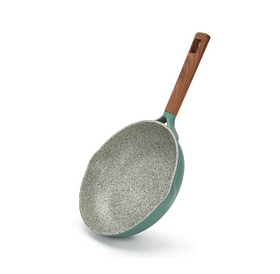
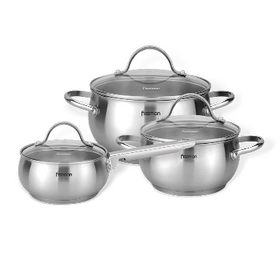
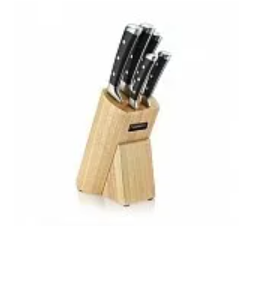
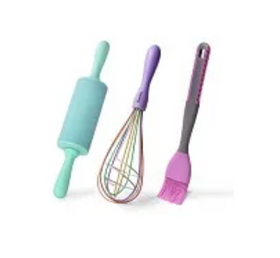

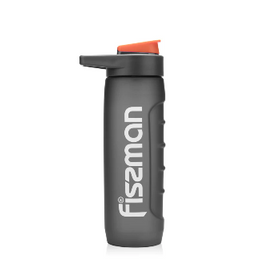
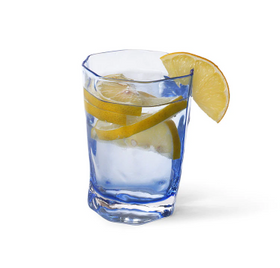




























Leave a comment